Beloved bank sign predicts the weather
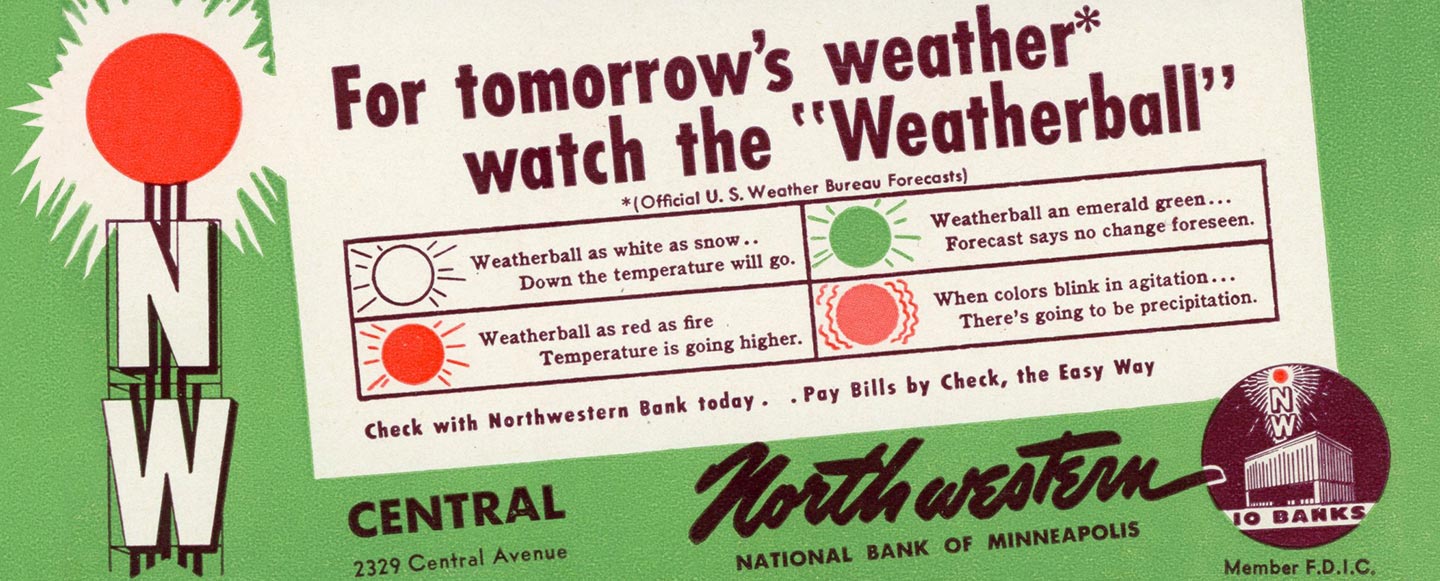
If you’re trying to get a quick weather update today, you might look down at your phone. But if you were in Minneapolis between 1949 and 1984, you may have looked up — to the Northwestern National Bank Weatherball. The Weatherball was a metal ball affixed to a tower that rose above the Northwestern National Bank building in downtown Minneapolis. Covered in 1.25 miles of neon lights and standing 367 feet above street level, the Weatherball was the largest sign between Chicago and California. People could see it from 15 miles away.
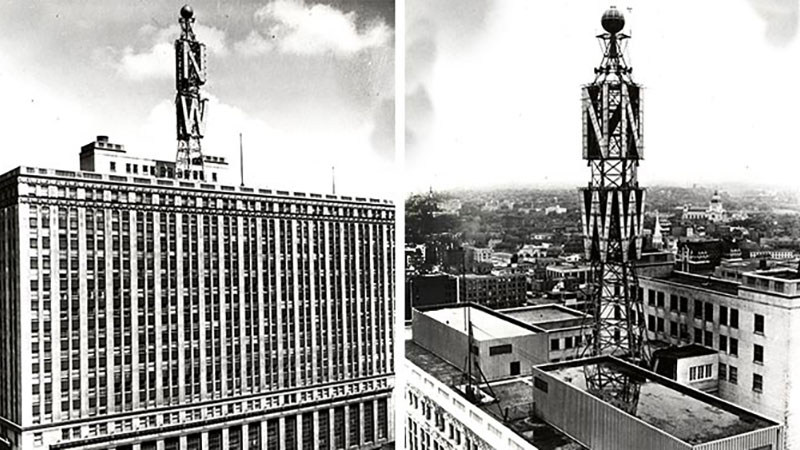
The Weatherball did more than light up the Minneapolis skyline; its lights would change color to match the U.S. Weather Bureau’s report for the day. It was the first in a series of weather reporting balls and beacons that dotted the skylines of cities across the U.S.
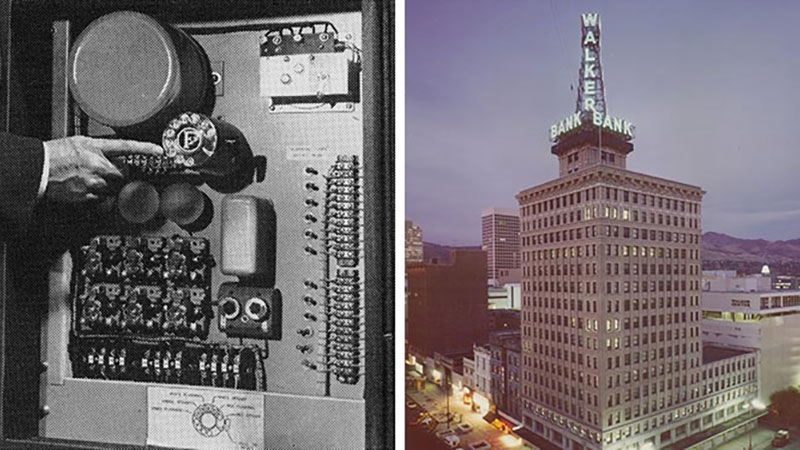
“The first of its kind in the U.S.”
In the 1940s, animation, interactives, and countless miles of neon tubes created a competitive space for businesses looking to catch customers’ attention. Advertisers developed increasingly creative billboards and signs using the new, eye-catching art form. Northwestern National Bank, which merged with Wells Fargo in 1998, turned to designer Douglas Leigh to increase its visibility to customers.
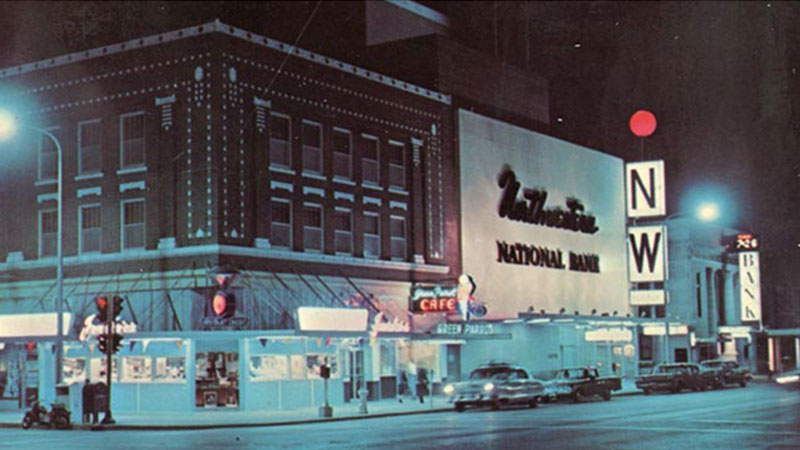
Leigh is perhaps best known for creating some of the largest and most remembered advertisements in New York City’s Times Square. In 1941, he had the idea of placing a color-changing weather beacon on the Empire State Building, but plans fell through with energy conservation efforts during World War II. He designed some billboard ads that displayed weather reports during the 1940s, but his design of Northwestern National Bank’s Weatherball is reportedly the first of its kind in the U.S.
Northwestern National Bank’s Weatherball became part of people’s daily routines. As one man reported to the local newspaper in 1949, “While I can always turn to the paper or the radio to check what the weather is going to be, it is so much easier to look out the window and see the bank’s huge sign emblazoned in the sky.”
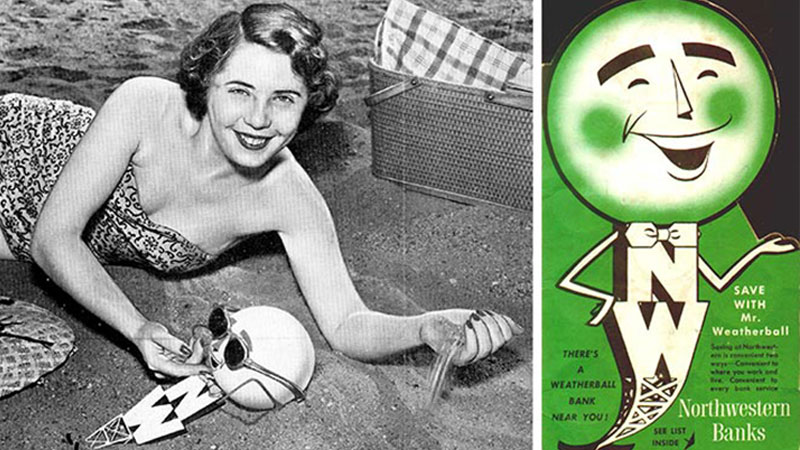
It quickly became the symbol of Northwestern National Bank. It appeared on ads, commercials, and coin banks. Northwestern National Bank produced catchy jingles and ads to help customers remember the color-coded system. In 1950, the bank introduced its mascot, a miniaturized version of the tower and ball with a smile, named “Mr. Weatherball.” Smaller replicas of the Weatherball were established at the bank’s branches, bringing the weather and Northwestern National Bank name to more customers.
Beloved bank sign predicts the weather
[Music playing]
When the weather ball is glowing red, warmer weather is just ahead
When the weather ball is shining white, colder weather is in sight
When the weather ball is wearing green, no weather changes are foreseen
Colors blinking by night and day, say precipitations on the way
Money is a ball
[Music ends]
Commercials, like this one from 1969/1970, used catchy jingles to help popularize the Weatherball’s color‑coded weather report. (:34) Credit: Wells Fargo Corporate Archives.
In 1982, a fire broke out next to the Northwestern National Bank building and quickly engulfed the building. The Weatherball survived but was turned off following the fire. It was removed in 1984, after the bank moved operations out of the building and changed its name and image. Today the legacy of the Weatherball continues, thanks to those who still hum the Weatherball jingle and share its story.
